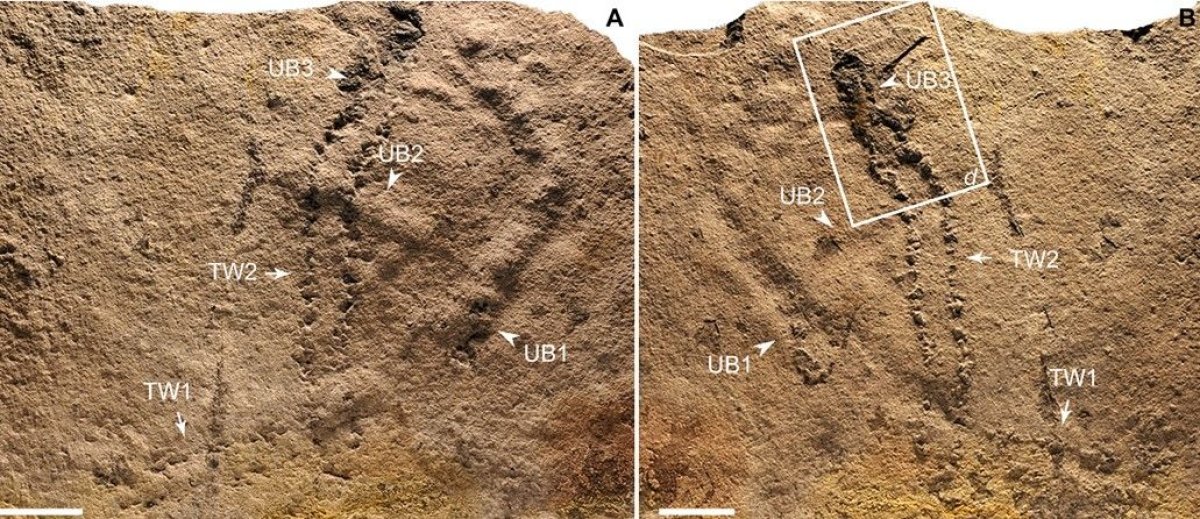Scientists think they have discovered the 550-million-year-old footprints of a small bug-like animal in the Yangtze Gorges area of China. This critter was roaming the planet millions of years before the first mammals, the first dinosaurs, and even the first fish.
Created before the Cambrian Explosion—a sudden burst in animal diversity that took place about 541 million years ago—scientists think these are the oldest trackways ever discovered on Earth. They published their findings Wednesday in the journal Science Advances.

"Animals use their appendages to move around, to build their homes, to fight, to feed, and sometimes to help mate," Virginia Tech University geobiologist and lead study author Shuhai Xiao told the Guardian. This early evidence of limbed critters is important for scientists, he added, as it can help us understand their evolution.
The fossil trackways—preserved between two ancient layers of rock—are very narrow, measuring about half an inch in width. Each print itself is less than 0.08 inches in size. The trackways themselves are accompanied by burrows, which have previously been linked to simple creatures similar to the worms of today.
Read more: Incredible 170-million-year-old dinosaur tracks discovered in Scotland
The researchers speculate that the same creature left both the tracks and the burrows, suggesting an animal that scurried and tunneled its way across the ground. The tracks are slightly uneven, however, so it might not have been as sure on its feet as today's bugs.
The authors can't tell exactly what kind of animal made the tracks, but they can narrow it down to something with pairs of matching legs. "The footprints are organised in two parallel rows, as expected if they were made by animals with paired appendages," Xiao told the Independent. "Also, they are organised in repeated groups, as expected if the animal had multiple paired appendages."
"But," he added, "Unless the animal died and was preserved next to its footprints, it is hard to say with confidence who made the footprints."
Read more: Ancient human footprints are oldest ever found in North America
Footprints are a precious commodity for scientists. In the last few months alone, they've revealed the hunting patterns of early humans—who, it turns out, may have preyed on giant sloths—and shed light on our species' migration around the globe.
But, these valuable imprints aren't always treated with the respect they deserve. Utah's Red Fleet State Park recently reported that tourists have been ripping up 200-million-year-old dinosaur tracks and tossing them into a reservoir nearby.
Uncommon Knowledge
Newsweek is committed to challenging conventional wisdom and finding connections in the search for common ground.
Newsweek is committed to challenging conventional wisdom and finding connections in the search for common ground.
About the writer
Katherine Hignett is a reporter based in London. She currently covers current affairs, health and science. Prior to joining Newsweek ... Read more
To read how Newsweek uses AI as a newsroom tool, Click here.








